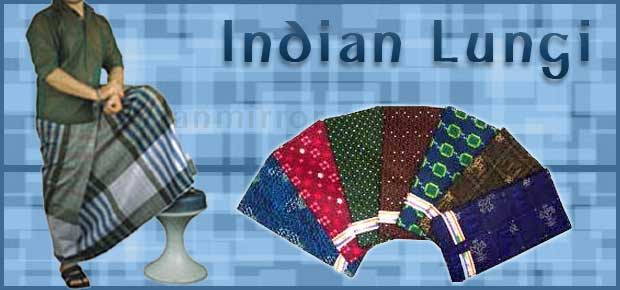There are many religions, communities, tribes and regions in India. Traditional clothing also varies according to them. During festive seasons like Diwali, Dashera, Eid-Al-Fitr, Ramadan, Makar Sankranti, Durga Puja, and other festivals Indians wear traditional dresses. A wide variety of cloths are available for special occasions for both men and women.
Traditional Clothing for Men
Men do not have as much
choices as women for clothing. Traditional Indian men’s clothing
includes kurta pajama/dhoti. Mostly South Indians wear a long white
piece of cloth. North Indians pronounce it as dhothi in languages like
Oriya, Marathi and Hindi, and in South Indian Telugu call it pancha and
Tamil call it veshti.
A traditional party wear for men is sherwani which is a long coat or type of Indian traditional jacket. Most of the men prefer shirts and trousers in their day-to-day routine as these are more comfortable. Rajasthani and Sikh men also wear turbans. Traditional turban is also a significance of religions.
A traditional party wear for men is sherwani which is a long coat or type of Indian traditional jacket. Most of the men prefer shirts and trousers in their day-to-day routine as these are more comfortable. Rajasthani and Sikh men also wear turbans. Traditional turban is also a significance of religions.
 |
| Durga Puja Fashion |
 |
| Dhuti |
 |
| Lungi |
Traditional Clothing for Women
Indian
women wear different types of cloths as per the climate, religion and
culture. Women’s dressings include lehengas, gaghra cholis and saris.
They are known as beautiful clothing for occasions. Mostly women wear
saris which are made of pure silk.
Mumbai (financial capital of India) is known as a fashion hub. However, in rural areas women prefer traditional cloths. Ladies wear saris with a traditional or trendy blouse. Young girls consider a pavada. Women also decorate their forehead with Bindi. There are other traditional cloths as well like dupatta, gamchha, churidar, mundum neriyathum, khara dupatta, kurta and women sherwani.
Though, the trend is changing in urban areas, in rural India women still wear the traditional dresses. Prior puberty, girls wear long skirts with a choli. Girls also wear paawada and langa in Andhra Pradesh (a state in India). Teen girls put on half-sarees, a choli and a three-piece langa.
A sari or saree is a traditional garment for women in Indian subcontinent. Different types of sarees are available in India such as Sambalpuri Saree in East, Paithani in West, Banarasi in North and Kanchipuram in South. Saree are worn over petticoats. Many girls also wear a backless choli or in a halter neck way. These are stylish than traditional ones.
The most popular dress in India among females is shalwar kameez. It is also common among Afghanistani and Pakistani girls. Shalwar kameez is worn with a dupatta which is used to cover bosom and head. Almost all girls wear it daily or occasionally.
Mumbai (financial capital of India) is known as a fashion hub. However, in rural areas women prefer traditional cloths. Ladies wear saris with a traditional or trendy blouse. Young girls consider a pavada. Women also decorate their forehead with Bindi. There are other traditional cloths as well like dupatta, gamchha, churidar, mundum neriyathum, khara dupatta, kurta and women sherwani.
Though, the trend is changing in urban areas, in rural India women still wear the traditional dresses. Prior puberty, girls wear long skirts with a choli. Girls also wear paawada and langa in Andhra Pradesh (a state in India). Teen girls put on half-sarees, a choli and a three-piece langa.
A sari or saree is a traditional garment for women in Indian subcontinent. Different types of sarees are available in India such as Sambalpuri Saree in East, Paithani in West, Banarasi in North and Kanchipuram in South. Saree are worn over petticoats. Many girls also wear a backless choli or in a halter neck way. These are stylish than traditional ones.
The most popular dress in India among females is shalwar kameez. It is also common among Afghanistani and Pakistani girls. Shalwar kameez is worn with a dupatta which is used to cover bosom and head. Almost all girls wear it daily or occasionally.
 |
| Saree |
 |
| Lehenga |
 |
| Skirt |
 |
| Salwar Kameez |
 |
| Salwar Kameez |
















